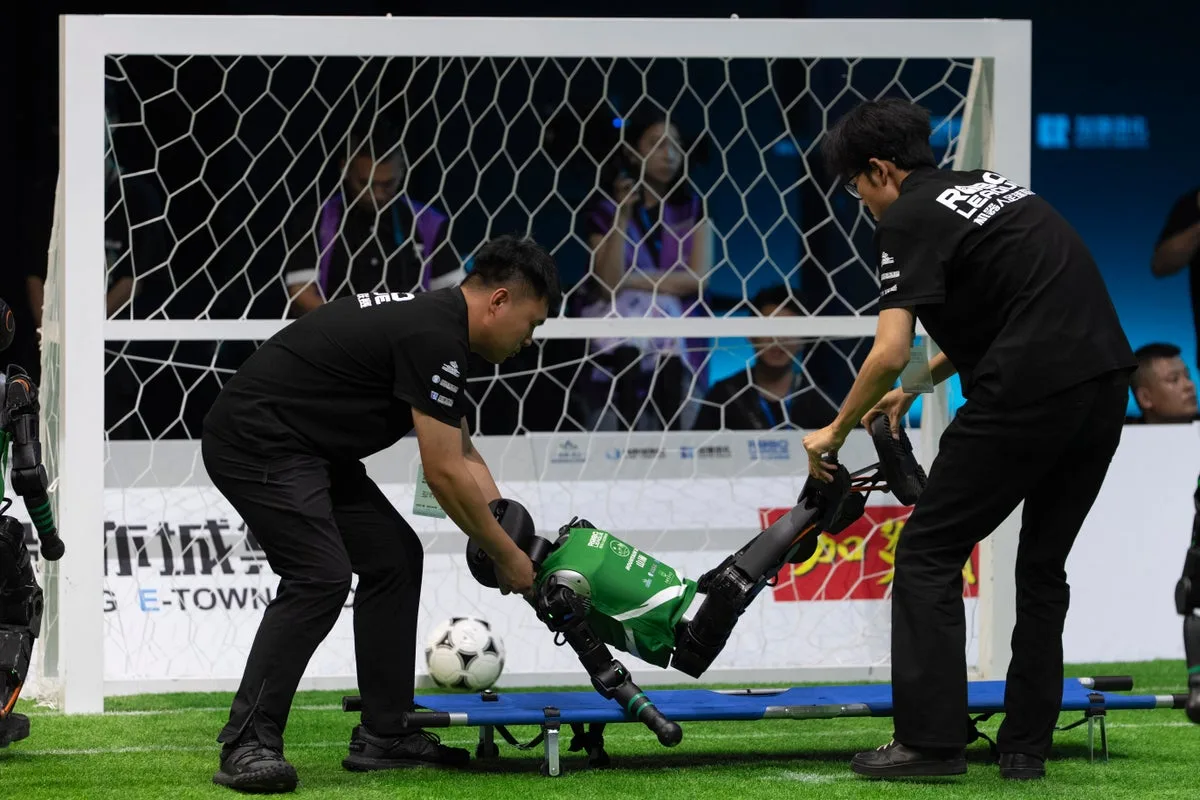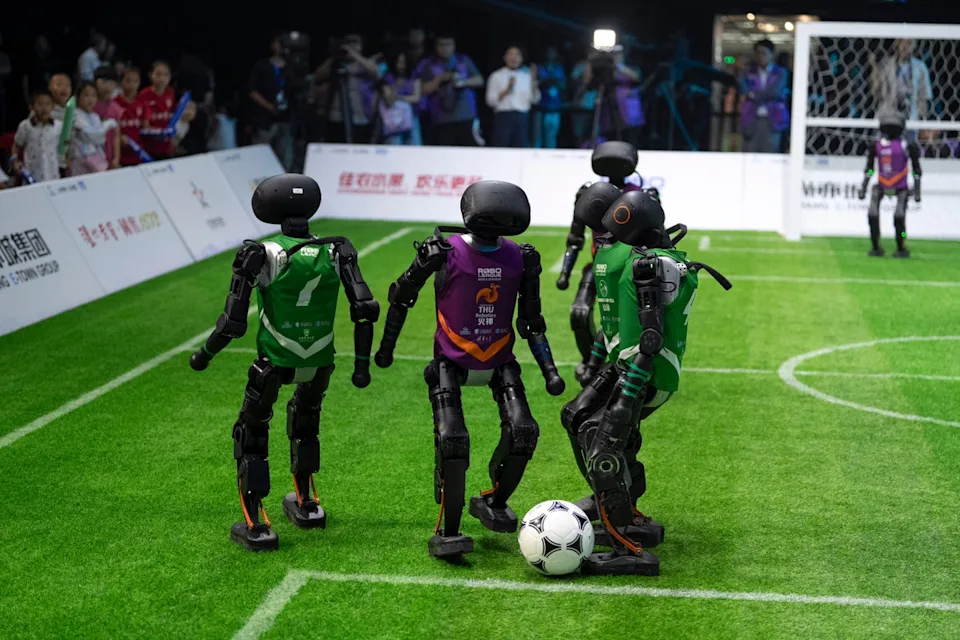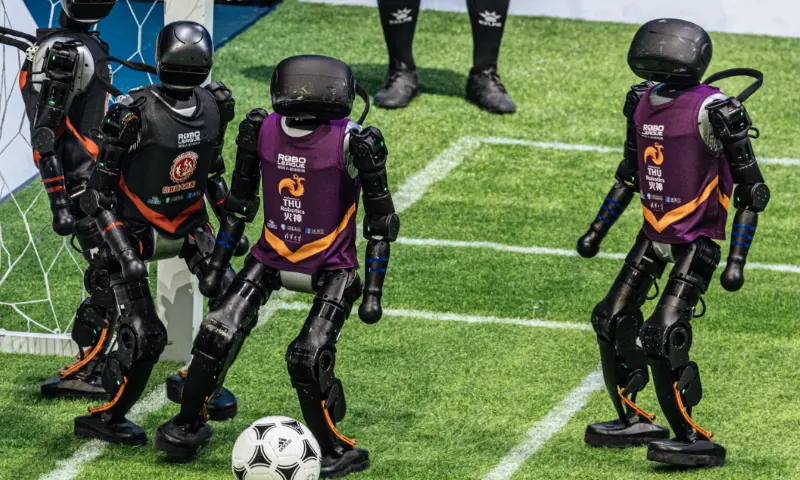China has hosted its first-ever fully autonomous 3v3 humanoid robot football match, signalling a significant breakthrough in real-world AI and robotics integration ahead of the 2025 World Humanoid Sports Games.
The final of the ROBO League, held in Beijing, saw Tsinghua University’s THU Robotics defeat Mountain Sea, the team from China Agricultural University, 5–3.
The match marked not just the end of the inaugural tournament, but the debut of autonomous robot-versus-robot football in China.
Described by organisers as a fusion of “technological innovation and real-world engineering”, the game featured no human intervention.
Each robot used AI-driven algorithms and visual sensors to detect the ball, interact with teammates, and make independent decisions throughout the game.
The robots were supplied by Booster Robotics, whose founder, Cheng Hao confirmed the competition marked two critical technical milestones: complete independence from human control, and an improved in-game referee and penalty system that limited stoppages and encouraged more fluid play.
Not everything went smoothly. Robots tumbled frequently and struggled with stability under pressure.
READ MORE: Birmingham City open talks with Super Eagles Bright Osayi-Samuel
Two players had to be stretchered off the pitch after failing to recover from falls, despite being designed for self-righting.

Photo Credit: AP
Slow-motion collisions and occasional mis-kicks added an endearing — if chaotic — layer to the spectacle.
Nonetheless, Cheng was optimistic:
“Just a year ago, these robots needed safety assistants. Now, they’re moving at speeds of 1 metre per second and can engage in real-time physical contests.”
The competition also served a broader purpose: reshaping public trust in robotics. Organisers stressed that robot football isn’t just a spectacle, but a strategic proving ground for future use cases, including human-robot interactions in sport.
Plans are underway to introduce more formats, such as a humanoid half-marathon and a full-contact “Mech League”.

Photo Credit: AP
The goal, according to co-organiser Bian Yuansong, is to catalyse mass adoption of humanoid robotics in society.
With current performance comparable to children aged five or six, engineers predict an exponential leap in ability over the coming years, with robots expected to challenge youth and eventually adult teams.
The Road to the Humanoid Games
This weekend’s event is the first in a series of competitive trials ahead of August’s World Humanoid Robot Games, which China will host.
CLICK HERE TO JOIN THE ATHLETIC NG WHATSAPP CHANNEL NOW!
The tournament has already included the country’s first AI-powered humanoid boxing match and is part of a national strategy to lead in AI-driven humanoid robotics.
By using sport — a naturally dynamic and unpredictable environment — China’s engineers are pushing AI and robotics to their physical and strategic limits.
“Our long-term goal is safe, collaborative interaction between robots and humans — possibly on the same football pitch,” said Cheng.









































